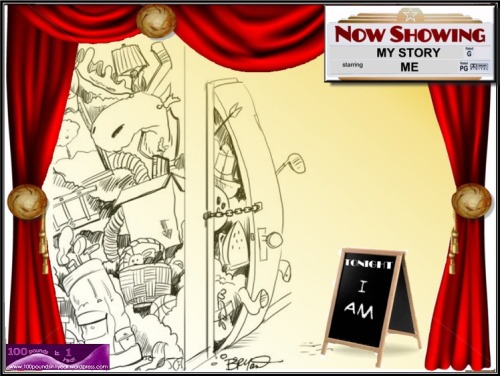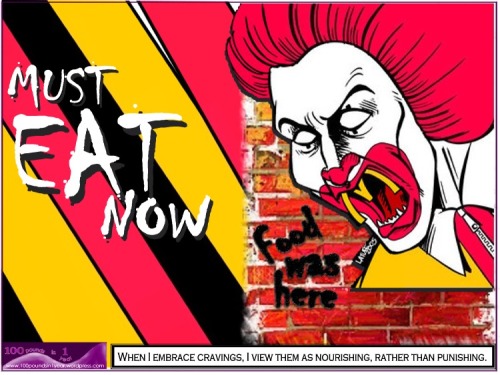Is your fitness routine fading? Is that promise you made to yourself getting harder to keep? Welcome to the “3rd week wall.” There’s something magical about making it through the third week, and its common to get stuck just as you thought you were doing great. Don’t get down on yourself. Instead, read ahead for some tools and tips to help you clear this hurdle and go even farther (first published in Living Well, 2013).
We know what they’re going to say: eat better, exercise more. As soon as health experts open their mouths, we hear their advice like an overplayed pop hit. Our eyes glaze-over. Our minds go numb. Yet, knowing the latest research hasn’t kept us from a nationwide Obesity and Diabetes epidemic. Why? Is there a missing link between what we’re learning and what we’re doing? Or, is it how we’re learning? Maybe we need easier ideas, something we can do right now that translates all that advice into real results. We need tips that can come alongside us, not create more conflict with our already-busy lives. While we’re at it, let’s demand something we can do and still be ourselves. Make it not too far out of reach but still inspire us to be our best selves. In that spirit of uncomplicated accomplishment, here are three revelations which can revive any mission to become and stay healthy.
First, Take a Step Backwards
Alyssa Schrock, Mrs. Montana 2013, recognizes that gap between knowledge and know-how. At a young age, she was diagnosed with Lupus and Rheumatoid Arthritis. “Here’s a pamphlet, go figure out a plan,” she quips, mimicking the limp advice she received from her doctor. “No one took the time to explain, ‘This is how you cope. This is what you do.’ As a result, it’s taken me all of fifteen years to learn how to manage my illness.”
Today, Alyssa lectures and educates others about how to navigate health challenges by developing a personal care plan. “I like to work backwards by starting with the end results.” Asking people to envision a fuller life, Alyssa poses questions like, “What do you want?” “Why are you doing this?” “What do you want it to look like?” For her, the answers included reducing her prescription medications, becoming strong enough to care for her family, and increasing her overall stamina. With those kinds of long-term desires in mind, Alyssa then considers short-term actions. “They need to be small steps, things we can do right where we’re at today,” she explains. Every time she progresses to the next step, Alyssa claims a win. It’s those tiny victories which keep her focused, so much so that she now has energy to support others. “I still have tired days when I have to remind myself this is normal for me, but I’m feeling good enough now that I can make my bubble bigger by reaching my arms out to the community, so that others won’t have to walk out of a hospital with a pamphlet and no idea what to do next.”
Think Big, Then Think Even Bigger
Just as Alyssa has learned how supporting her community helps her stay healthy, we may need to unite our health routine with a larger purpose. Often times, we find more motivation when connect with the “why.” Nurturing wellbeing can be an expression of our commitment to something bigger. This bigger picture provides fresh purpose to pluck us from stuck places and create momentum again.
The Women’s Club Health and Fitness Center of Missoula – one of the nation’s first women’s only gyms which started 30 years ago – takes that bigger purpose to heart. “TWC women don’t separate caring for their health from caring for the Missoula community; to them, it’s all connected,” explains Camie Evans, Manager and Co-Owner of the club. Their latest investment is a saline pool and hot tub. Recently, The Women’s Club converted to a salt water system. “We hear how important environmental stewardship is to our members, and they’re happier when they know their workout supports their values” says Cathy Schwenk, Facility Maintenance Leader. “We’ve been looking at a saline system for years, but it’s only recently that the technology has become compatible with our facility. We like to say, ‘We’re going green, so your hair won’t have to.’”
Get off the Guilt-Go-‘Round
I once heard a young mom with a large family lament her sedentary lifestyle. “I know I need to get me and the kids exercising more, but it’s not easy,” she groaned. “They say this town is such an easy place to be active, but you either have to have lots of time or lots of money, and I don’t have either.” I nodded my head. She indeed was one of the busiest moms I knew. I also knew, however, that there was a public trail system just minutes from her home. Spotting the gap between what she said and what she could do, I surmise her frustration served more as a deflection of guilt.
Come to think of it, criticizing the sometimes conflicting health advice we receive is an effective deflection, as well. Resistance can cover up guilt over not being healthier. Here’s the good news: guilt doesn’t work, so you can let it go. Guilt is a disconnecting force which short-circuits our best intentions. Guilt acts like static to our souls; keeping us judging ourselves and arguing with those judgments. It fuzzes that heart/mind connection where creativity and motivation abide. So let go of guilt about not exercising enough or eating bad food.
You can create a vibrant lifestyle when you cultivate these ideas. First, begin with your vision for a healthier you. Then, support that vision by connecting with a bigger purpose. Finally, release energy-sucking guilt. Now you can harness all that energy you’ve been using to simply survive the stuckness and shift your focus into drive.
We need tips that can come alongside us, not create more conflict with our already-busy lives.
















